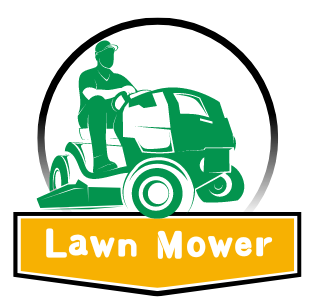If you’ve ever envied your neighbor’s lush green lawn, you’re not alone. A healthy lawn not only enhances the beauty of your home but also adds value to your property. Achieving and maintaining a green lawn requires proper care and attention.
In this article, we’ll explore 6 secrets to keep your lawn green and healthy year-round. From aeration to watering techniques and organic fertilizers, you’ll learn practical tips to ensure your lawn stands out in the neighborhood.
Secrets to Keep Your Lawn Green
1) Aerate Your Lawn
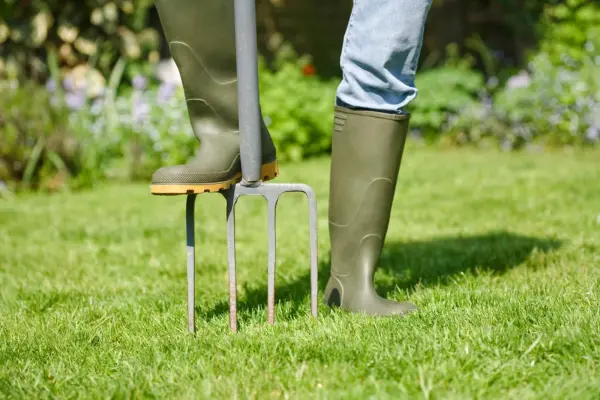
What is lawn aeration?
Lawn aeration is important for keeping your lawn healthy. It means poking small holes in the soil to help air, water, and nutrients get to the roots better. When soil gets too packed down from walking on it, roots can’t breathe well or get what they need.
To aerate, you use tools that poke the soil, like aerators with sharp points that pull out small plugs of dirt. This loosens up the soil, helps water drain, and lets roots grow stronger. It’s best to aerate your lawn once a year, usually in early spring or fall when the grass grows the most.
How often should you aerate?
How often you aerate depends on things like the type of soil you have, how much you use your lawn, and your climate. Most lawns do well with aerating once a year to keep the soil healthy. But if your lawn gets a lot of foot traffic or the soil feels really packed, you might need to aerate more often.
2) Watering Practices

Watering your lawn the right way keeps your grass healthy and green. Instead of watering often with just a little water, which makes shallow roots, water deeply but less often. This helps roots grow deeper into the soil, making your lawn tougher against drought and heat.
Best Times to Water
In summer, water your lawn once a week, adjusting if it’s really hot or your soil type needs more water. Sandy soil needs more water, while clay soil holds water longer. Water early in the morning so the sun can dry the grass quickly and prevent diseases.
Signs of Too Much or Too Little Water
Too much water: Grass turns yellow, soil feels wet and spongy, and weeds grow a lot.
Too little water: Grass looks wilted, turns brown, and you can see footprints on the lawn after walking.
3) Mowing Tips

Keeping your Height Settings on Lawn Mower at the right height when for mow is important for its health and how good it looks. Different kinds of grass do best when they’re cut between 2 to 3 inches tall. Cutting too short stresses the grass and lets weeds grow. If you let it get too long, it can block air and make diseases more likely.
How Often to Mow
Mow regularly so you’re only cutting off a third of the grass height each time. This helps keep the grass healthy and lets clippings break down to give nutrients back to the soil.
Why Sharp Blades Matter
Make sure your mower blades are sharp. Dull blades tear the grass instead of cutting it clean, which can make the grass sick. Sharpen your blades every 1 to 2 months for a nice, green lawn.
4) Using Organic Fertilizers
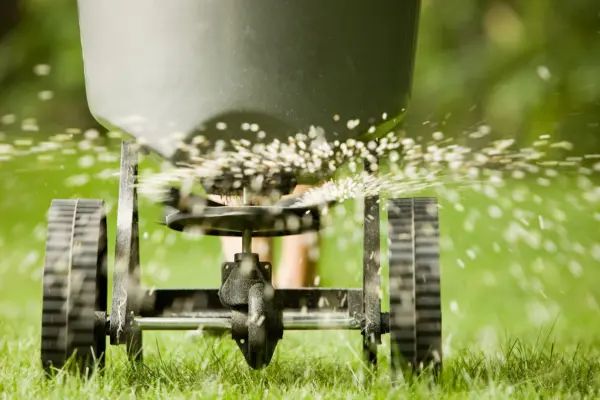
Organic fertilizers offer numerous benefits for both your lawn and the environment. Unlike synthetic fertilizers, which can leach chemicals into water sources and harm wildlife, organic options are derived from natural materials like composted garden waste, animal manure, or seaweed. They improve soil structure, promote microbial activity, and release nutrients slowly, providing long-term nourishment for your lawn.
DIY composting
Creating your own compost is a cost-effective and eco-friendly way to enrich your lawn with organic nutrients. Start by collecting kitchen scraps, yard trimmings, and other organic materials in a compost bin. Over time, these materials break down into nutrient-rich compost that can be spread evenly over your lawn. This natural fertilizer enhances soil fertility, encourages earthworm activity, and reduces the need for chemical inputs.
5) Weed Control
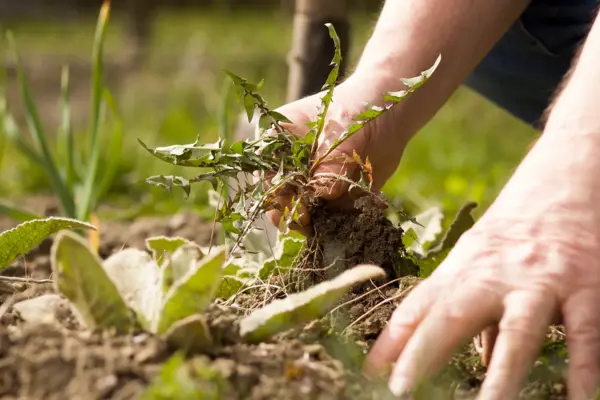
Getting rid of weeds is important to keep your lawn healthy. Weeds take away nutrients, water, and sunlight that grass needs. Here are some ways to control weeds:
Pulling by Hand
For small areas or a few weeds, pull them out by hand or use tools like a hoe. Make sure to get the whole root to stop them from growing back.
Using Weed Killers
Use herbicides that target specific weeds without hurting your grass. Follow the instructions on the label carefully for safe and effective use. Look for natural options if you prefer.
Preventing Weeds
Keep your lawn healthy by watering, mowing, and fertilizing it right. A thick, well-kept lawn stops weeds by shading the soil and beating them in the fight for space.
6) Dealing with Pet Damage
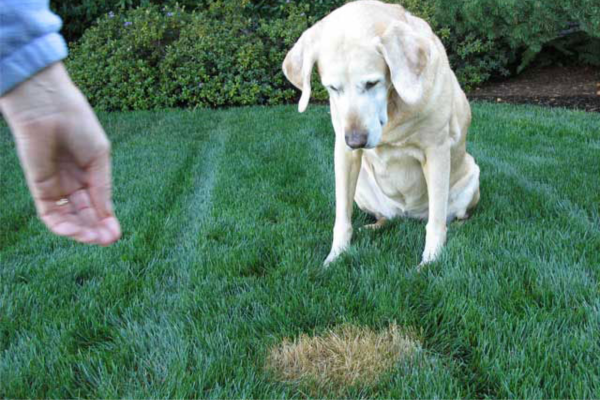
Pets can accidentally harm your lawn, especially with urine spots that make brown patches. Here’s how to deal with pet damage:
Act fast: When you see a urine spot, rinse it right away with water to make the urine less strong and protect the grass.
Teach them: Train your pets to use a specific part of the lawn for going to the bathroom, away from places people walk or can see.
Water it: Regularly water where pets go to make the urine less strong and keep the grass healthy.
Fix spots: If brown spots stay, plant new grass seed there to help it grow back green and make your lawn look good again.
Conclusion: Secrets to Keep Your Lawn Green and Healthy
In conclusion, having a lush, green lawn takes work, but the results are worth it. By using the six tips we talked about, you can keep your lawn healthy, vibrant, and the best on the block.
Here’s what you need to remember:
Aerate often: This helps the soil and roots get more nutrients.
Water right: Give your lawn a good soak less often for stronger roots.
Mow well: Keep your grass at the right height and keep your mower blades sharp.
Use natural fertilizers: Help your soil grow better without hurting the environment.
Stop weeds: Keep weeds from taking food and space from your grass.
Watch pets: Keep pet pee from making spots on your lawn.
If you stick with these tips and take care of your lawn regularly, you’ll have a beautiful lawn that helps your home look great and helps the environment too. Start using these tips now and see your lawn stay healthy and green all year long.
